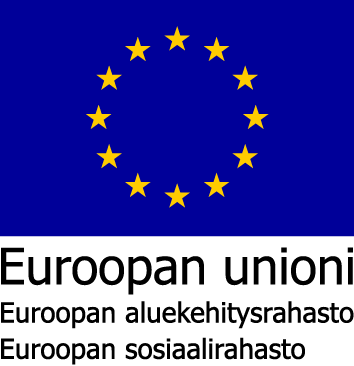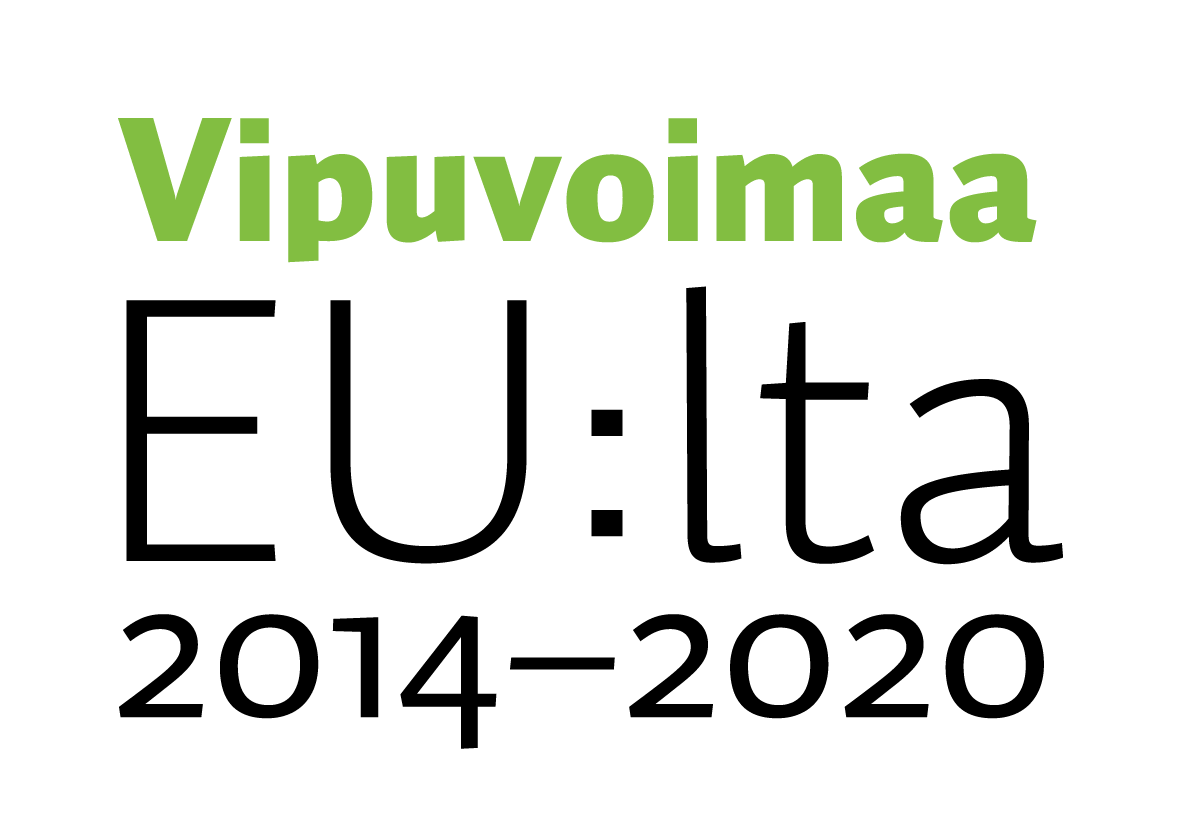

 |
 |
Hankekoodi: A70265
Hankkeen nimi: GeoSorbents
Toimintalinja: 2. Uusimman tiedon ja osaamisen tuottaminen ja hyödyntäminen
Erityistavoite: 4.1. Tutkimus-, osaamis- ja innovaatiokeskittymien kehittäminen alueellisten vahvuuksien pohjalta
Suunnitelman mukainen toteutusaika: Alkaa 1.1.2015 ja päättyy 1.1.2017
Toiminnan tila: Toiminta päättynyt
Vastuuviranomainen: Innovaatiorahoituskeskus Business Finland
Hakijan virallinen nimi: Kajaanin Ammattikorkeakoulu Oy
Organisaatiotyyppi: Ammattikorkeakoulu
Y-tunnus: 2553600-4
Jakeluosoite: PL 52
Puhelinnumero:
Postinumero: 87101
Postitoimipaikka: KAJAANI
WWW-osoite: www.kamk.fi
Hankkeen yhteyshenkilön nimi: Kemppainen, Kimmo
Yhteyshenkilön asema hakijaorganisaatiossa: N/A
Yhteyshenkilön sähköpostisoite: kimmo.kemppainen(at)kamk.fi
Yhteyshenkilön puhelinnumero: +358447101050
Hakijoiden lukumäärä tai tuen siirto -menettely:
Useilla kansallisilla alueilla vaikuttava vesipula ja tiukentuvat ympäristölupaehdot vaativat uusia tehokkaita ja edullisia vedenkäsittelymateriaaleja ja -teknologioita. GeoSorbents -projektin tavoitteena on kehittää kustannus- ja energiatehokkaasti valmistettavia uusia tuotteita ja käyttösovellutuksia veden- ja jätevedenkäsittelyyn. Projektissa haetaan ratkaisuja haitallisten metallien, puolimetallien, sulfaatin, ammoniumtypen ja orgaanisten yhdisteiden poistoon. Projektin lähtökohtana on kehittää T&K -työn kautta projektiin osallistuvien yritysten liiketoimintaa ja parantaa niiden kilpailukykyä. Projektiin yrityskumppanit ovat sivuvirtojen ja sekundääristen materiaalien tuottajia, vedenpuhdistustuotteiden tuotantoon tähtääviä yrityksiä sekä tuotteiden loppukäyttäjiä, kuten teollisuusprosesseja sekä teollisuuden ja kuntien jätevesilaitoksia.
GeoSorbents -projektin taustalla vaikuttaa tarve kaivannaisteollisuuden, energiatuotannon ja metallinjalostuksen tuottamien jäte-, sivuvirta- ja sekundääristen raaka-aineiden hyödyntämiseen ja jatkojalostukseen veden- ja jätevedenkäsittelytuotteiksi. Näiden raaka-aineiden ohella ja lisäksi voidaan käyttää paikallisesti saatavilla olevia primäärisiä materiaaleja. Useita sivuvirtamateriaaleja on saatavilla edullisesti ja niille on tarvetta löytää hyötykäyttöä. Geopolymeeriteknologian soveltaminen sivuvirtamateriaalien prosessointiin antaa mahdollisuuden löytää sivuvirroille korkean lisäarvon hyötykäyttökohteita ja luoda teknisesti kilpailukykyisiä kaupallisia tuotteita veden- ja jätevedenkäsittelyyn.
Myönnetty EU- ja valtion rahoitus: 253 932
Toteutunut EU- ja valtion rahoitus: 217 876
Suunniteltu julkinen rahoitus yhteensä: 278 932
Toteutunut julkinen rahoitus yhteensä: 242 876
Maakunnat: Kainuu
Seutukunnat: Kajaanin
Kunnat: Kajaani
Jakeluosoite: Ketunpolku 3
Postinumero: 87101
Postitoimipaikka: Kajaani
Suunniteltu: 2, joihin työllistyvät naiset 2
Toteutunut seurantatietojen mukaan: 0.00, joihin työllistyvät naiset 0.00
Suunniteltu: 0, joista naisten perustamia 0
Toteutunut seurantatietojen mukaan: 0.00, joista naisten perustamia 0.00
| Välitön | Välillinen | |
| Ekologinen kestävyys | ||
| Luonnonvarojen käytön kestävyys | 10 | 0 |
| Projektissa kehitetään jätemateriaalien hyödyntämistä raaka-aineena | ||
| Ilmastonmuutoksen aiheuttamien riskien vähentäminen | 8 | 0 |
| Jätemateriaalien hyödyntämisellä voidaan korvata primäärimateriaaleja. Projektissa tutkittavat raaka-aineet ovat Suomesta saatavia, jolloin kuljetuksesta aiheutuvat päästöt ovat pienet. Lisäksi geopolymeeriteknologialla valmistaminen ei vaadi lämpökäsittelyä, kuten esimerkiksi synteettisten zeoliittien valmistaminen vaatii. Näistä tekijöistä johtuen CO2-päästöt ovat pienemmät verrattuna tyypillisiin tällä hetkellä käytettäviin kaupallisiin tuotteisiin. | ||
| Kasvillisuus, eliöt ja luonnon monimuotoisuus | 4 | 0 |
| Jätemateriaalin tehokkaampi hyödyntäminen vähentää uusiutumattomien luonnonvarojen käyttöä ja CO2-päästöjä. Lisäksi tehokkaat uudet vedenkäsittelymenetelmät suojelevat vesiympäristöjen eliöitä päästöiltä. | ||
| Pinta- ja pohjavedet, maaperä sekä ilma (ja kasvihuonekaasujen väheneminen) | 10 | 0 |
| Projektin tuotekehityssovellutuksiin kuuluu vedenpuhdistustuotteiden erityisesti kaivosympäristöön ja CO2-päästöjä vähentävien tuotteiden ja ratkaisujen kehittäminen hyödyntämällä jätteitä. | ||
| Natura 2000 -ohjelman kohteet | 0 | 5 |
| CO2-päästöjen väheneminen, vesiympäristöjen suojelu ja primääristen luonnonvaroja korvaaminen jäte- ja sivutuotemateriaaleilla edistää kohteiden säilymistä. Hankkeella ei ole suoraa rajapintaa Natura 2000-ohjelmaan. | ||
| Taloudellinen kestävyys | ||
| Materiaalit ja jätteet | 9 | 0 |
| Projektin päätavoite on kaivannaisjätteiden ja energiatuotannon jätteiden hyödyntäminen | ||
| Uusiutuvien energialähteiden käyttö | 9 | 0 |
| Jätteiden käyttö vedenkäsittelymateriaalien raaka-aineena vähentää uusiutumattomien raaka-aineiden tarvetta. | ||
| Paikallisen elinkeinorakenteen kestävä kehittäminen | 9 | 0 |
| Projekti perustuu alueella syntyvien kaivannaisjätteiden ja energiatuotannon jätteiden jatkojalostukseen ja kaupallisesti hyödynnettävien tuotteiden kehittämiseen | ||
| Aineettomien tuotteiden ja palvelujen kehittäminen | 9 | 0 |
| Projektin tavoitteena on uusimman teknologisen tietotaidon jalkauttaminen alueelle liittyen sekundääristen raaka-aineiden hyödyntämiseen. | ||
| Liikkuminen ja logistiikka | 9 | 0 |
| Projektissa pyritään alueella saatavilla olevien raaka-aineiden tehokkaampaan hyödyntämiseen, joka vähentää tarvetta ja riippuvuutta muualta tuotavien raaka-aineiden ja tuotteiden käyttöön. | ||
| Sosiaalinen ja kulttuurinen kestävyys sekä yhdenvertaisuus | ||
| Hyvinvoinnin edistäminen | 0 | 6 |
| Tuotekehitystoiminta tähtää uusien tuotteiden kaupalliseen hyödyntä-miseen ja liiketoiminnan syntyyn, jolla on positiivinen vaikutus työpaikkojen säilyvyyteen ja uusien työpaikkojen syntyyn. | ||
| Tasa-arvon edistäminen | 3 | 0 |
| T&K -työssä huomioidaan tasa-arvokysymykset ja eri sukupuolten näkemykset, mutta sukupuolten tasa-arvon edistäminen ei ole hankkeen tavoite. | ||
| Yhteiskunnallinen ja kulttuurinen yhdenvertaisuus | 8 | 0 |
| Projektissa pyritään eri organisaatiotyyppien (tutkimus, koulutus, yritykset eri aloilta) välisen yhteistyön edistämiseen. | ||
| Kulttuuriympäristö | 8 | 0 |
| Jätemateriaalien hyötykäytön lisääminen vähentää jätteiden säilyttämisestä aiheutuvaa maisemallista haittaa. | ||
| Ympäristöosaaminen | 10 | 0 |
| Projekti pyrkii luonnonvarojen kokonaisvaltaiseen hyödyntämiseen ja tiedon lisäämiseen | ||
Useilla kansallisilla alueilla vaikuttava vesipula ja tiukentuvat ympäristölupaehdot vaativat uusia tehokkaita ja edullisia vedenkäsittelymateriaaleja ja -teknologioita. GeoSorbents -projektin tavoitteena on kehittää kustannus- ja energiatehokkaasti valmistettavia uusia tuotteita ja käyttösovellutuksia veden- ja jätevedenkäsittelyyn. Projektissa haetaan ratkaisuja haitallisten metallien, puolimetallien, sulfaatin, ammoniumtypen ja orgaanisten yhdisteiden poistoon. Projektin lähtökohtana on kehittää T&K -työn kautta projektiin osallistuvien yritysten liiketoimintaa ja parantaa niiden kilpailukykyä. Projektiin yrityskumppanit ovat sivuvirtojen ja sekundääristen materiaalien tuottajia, vedenpuhdistustuotteiden tuotantoon tähtääviä yrityksiä sekä tuotteiden loppukäyttäjiä, kuten teollisuusprosesseja sekä teollisuuden ja kuntien jätevesilaitoksia.
GeoSorbents -projektin taustalla vaikuttaa tarve kaivannaisteollisuuden, energiatuotannon ja metallinjalostuksen tuottamien jäte-, sivuvirta- ja sekundääristen raaka-aineiden hyödyntämiseen ja jatkojalostukseen veden- ja jätevedenkäsittelytuotteiksi. Näiden raaka-aineiden ohella ja lisäksi voidaan käyttää paikallisesti saatavilla olevia primäärisiä materiaaleja. Useita sivuvirtamateriaaleja on saatavilla edullisesti ja niille on tarvetta löytää hyötykäyttöä. Geopolymeeriteknologian soveltaminen sivuvirtamateriaalien prosessointiin antaa mahdollisuuden löytää sivuvirroille korkean lisäarvon hyötykäyttökohteita ja luoda teknisesti kilpailukykyisiä kaupallisia tuotteita veden- ja jätevedenkäsittelyyn.